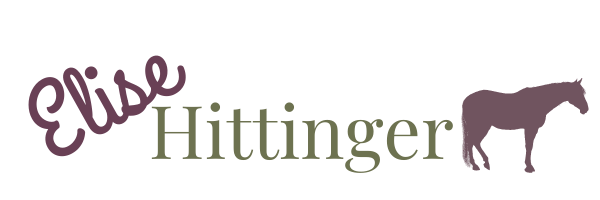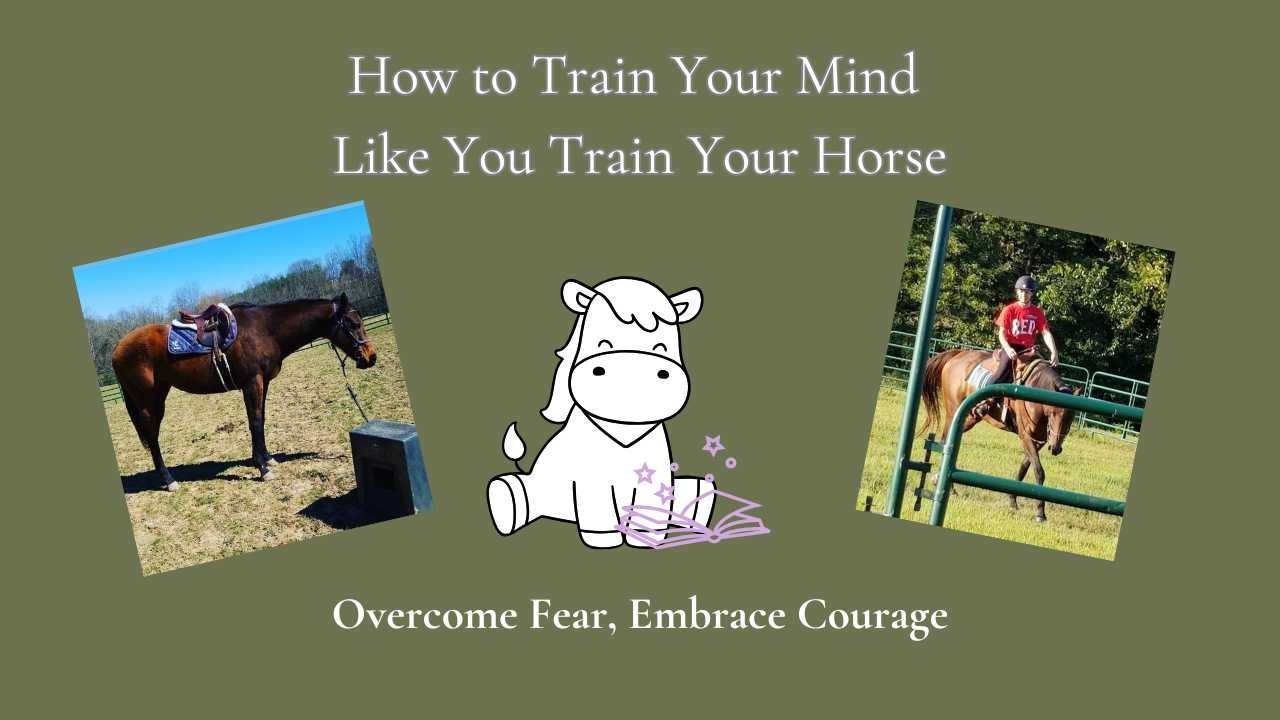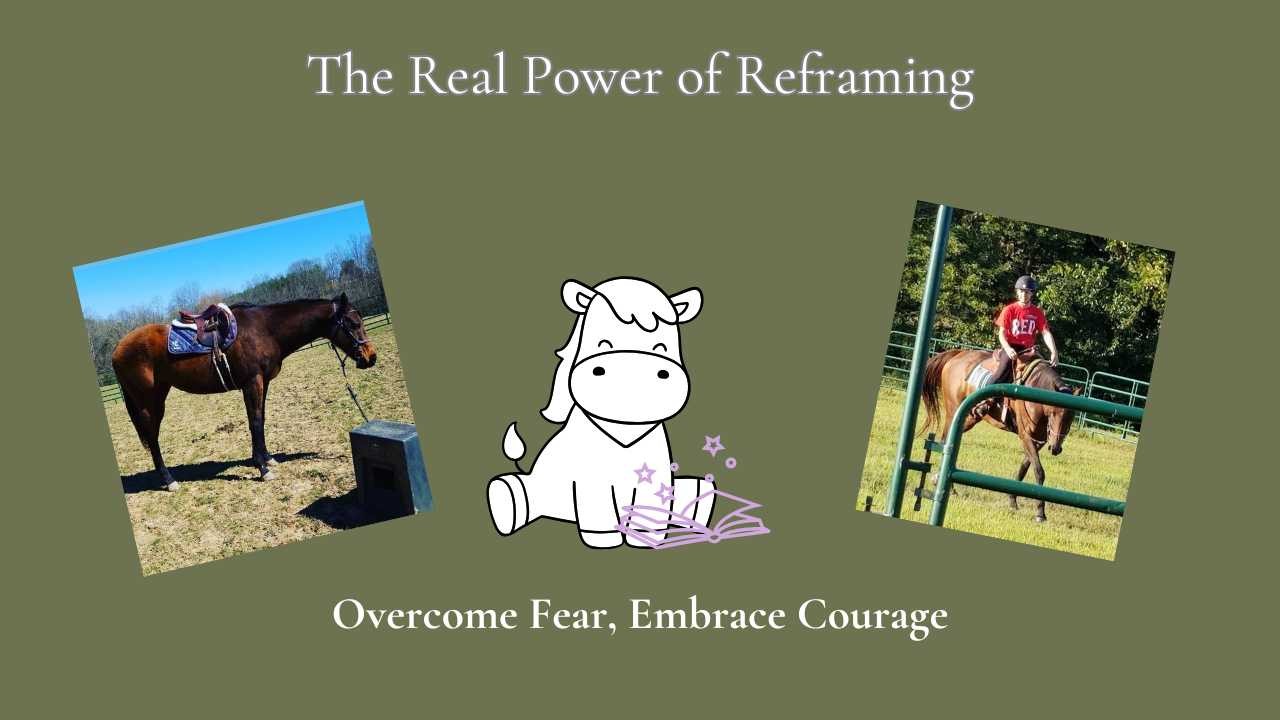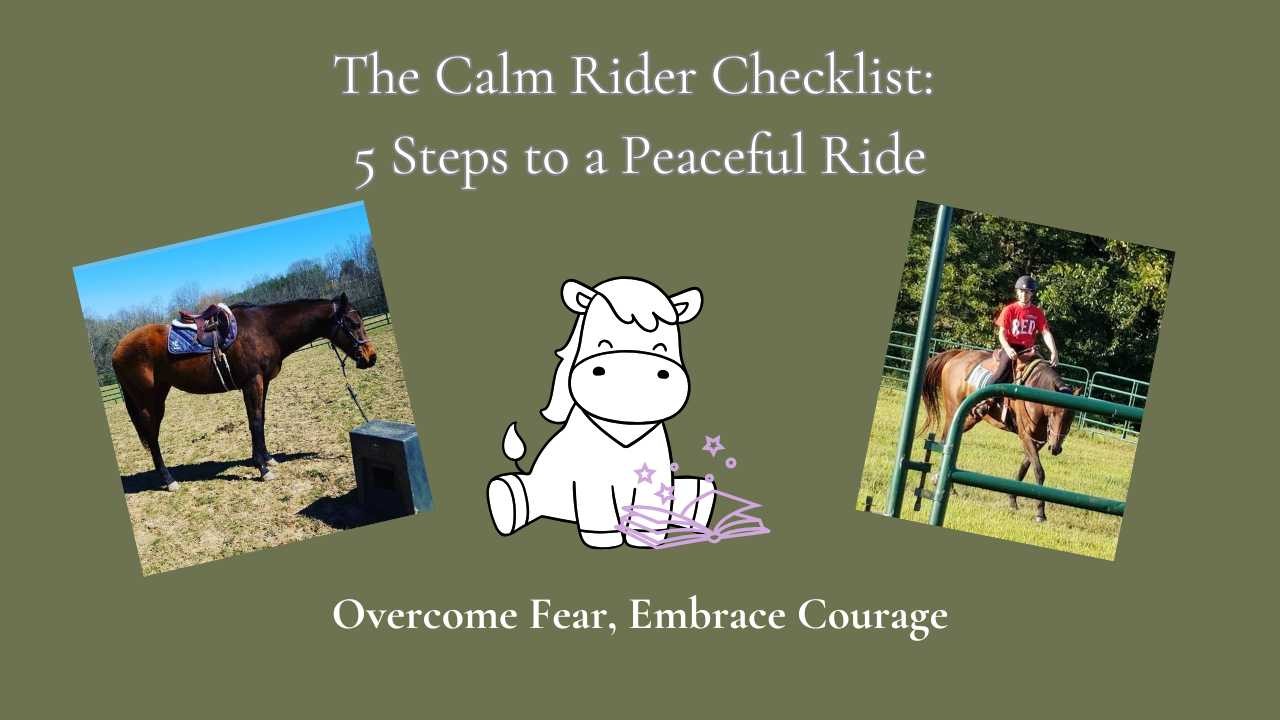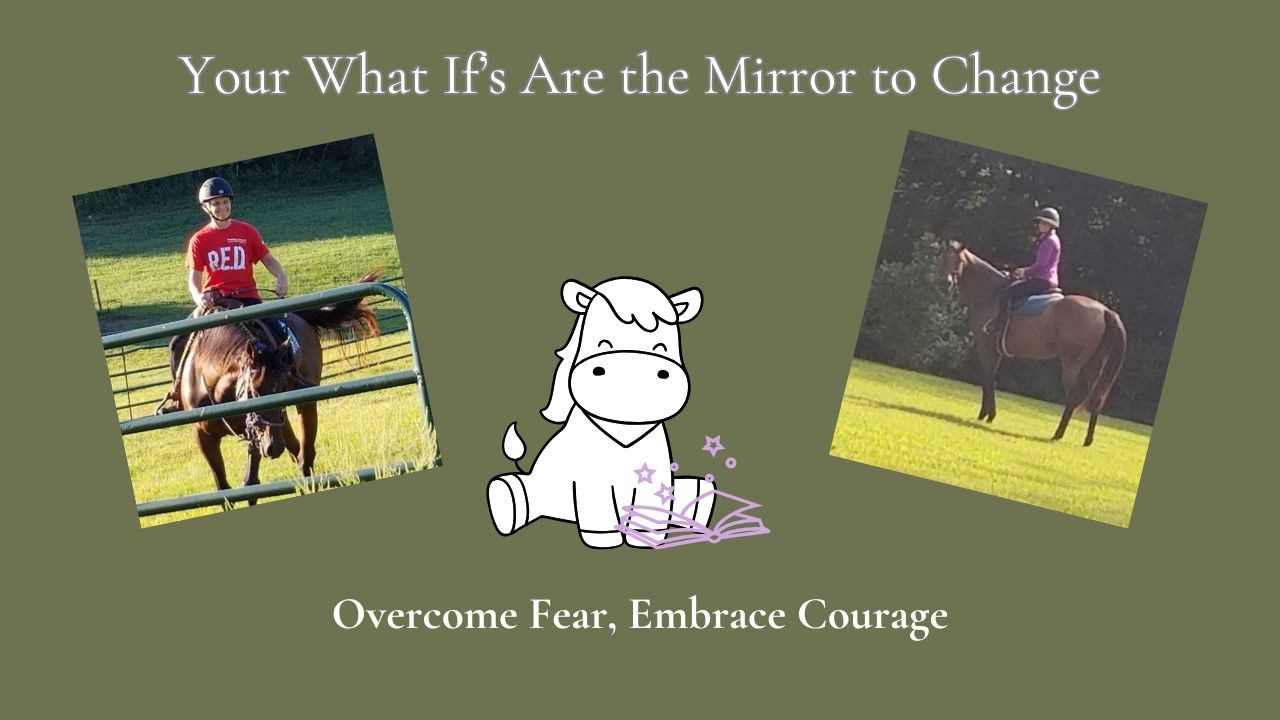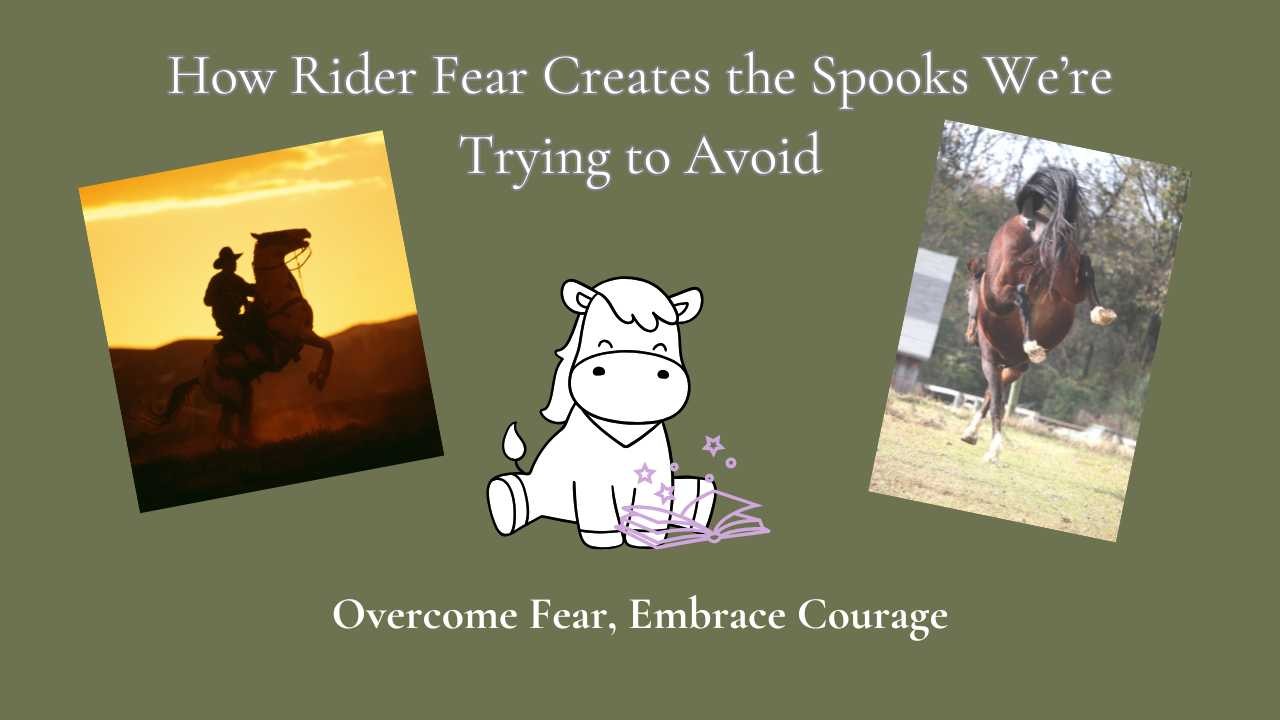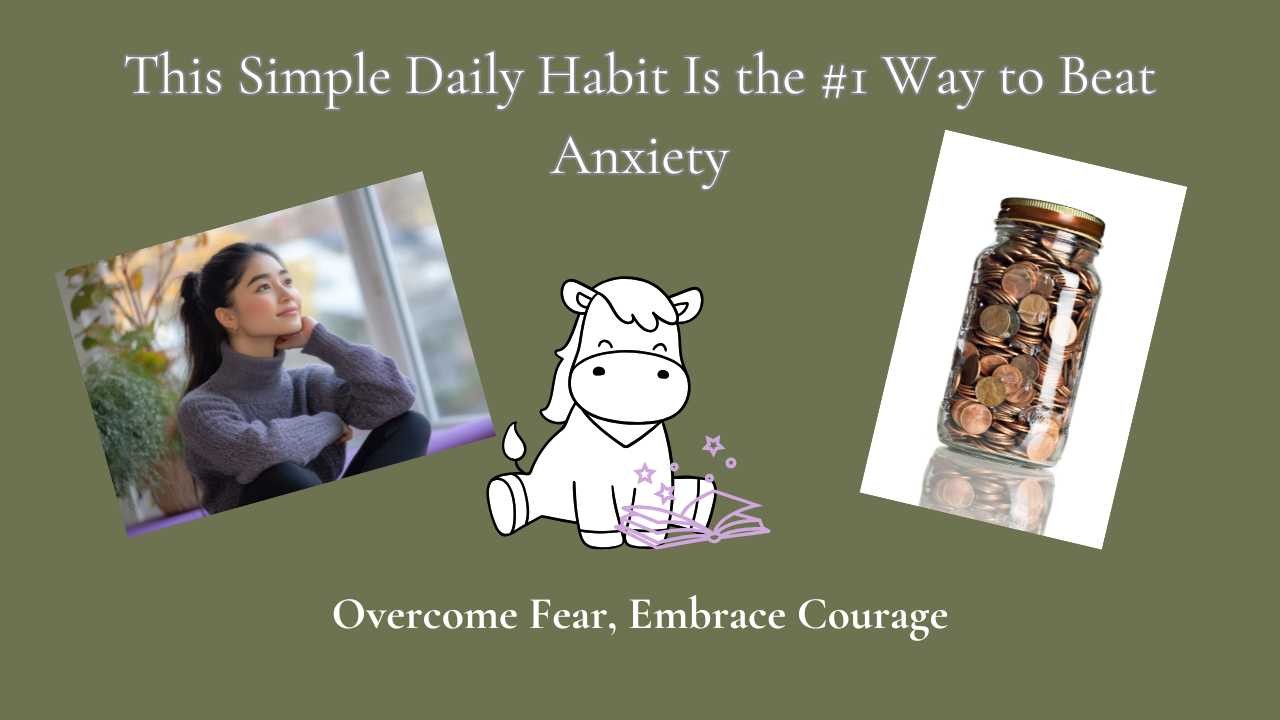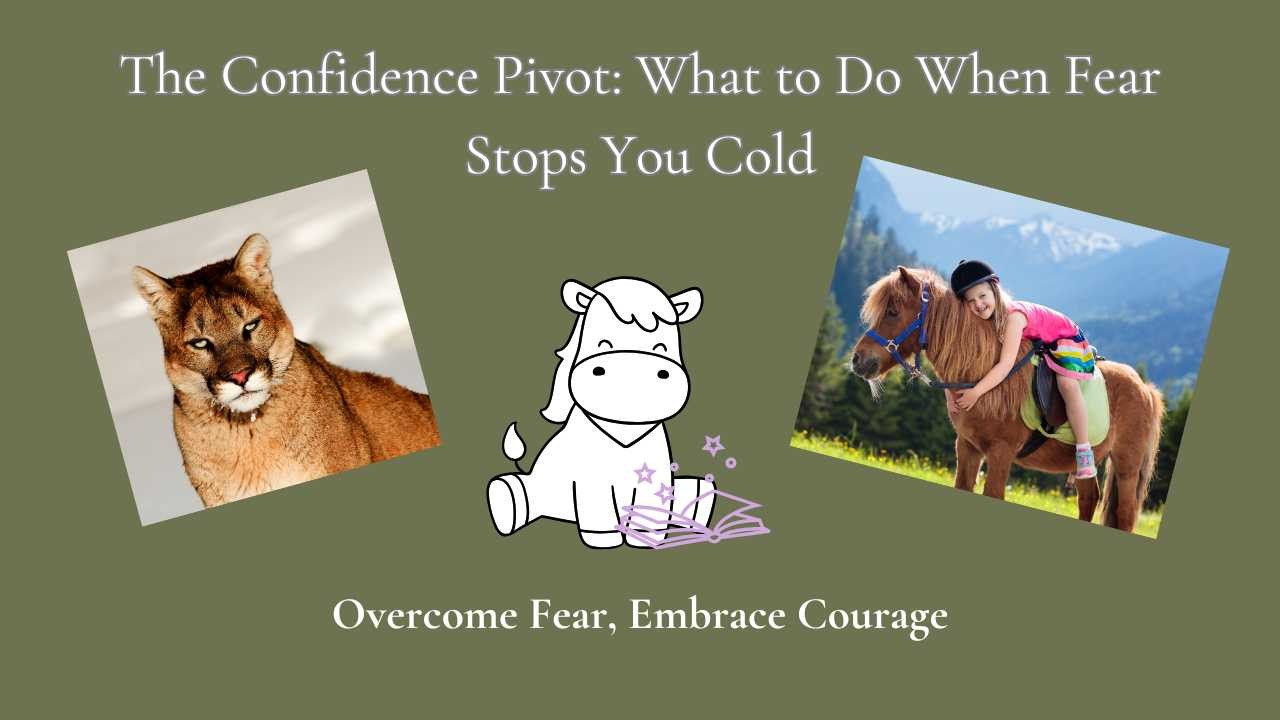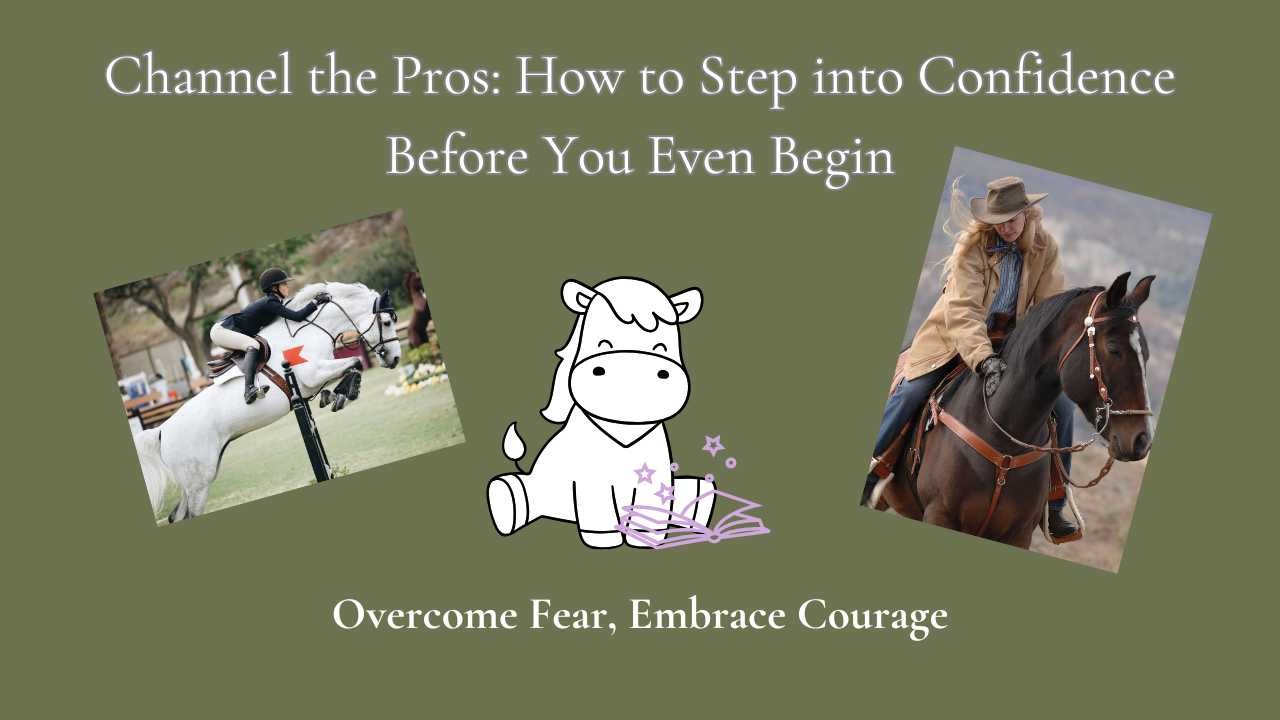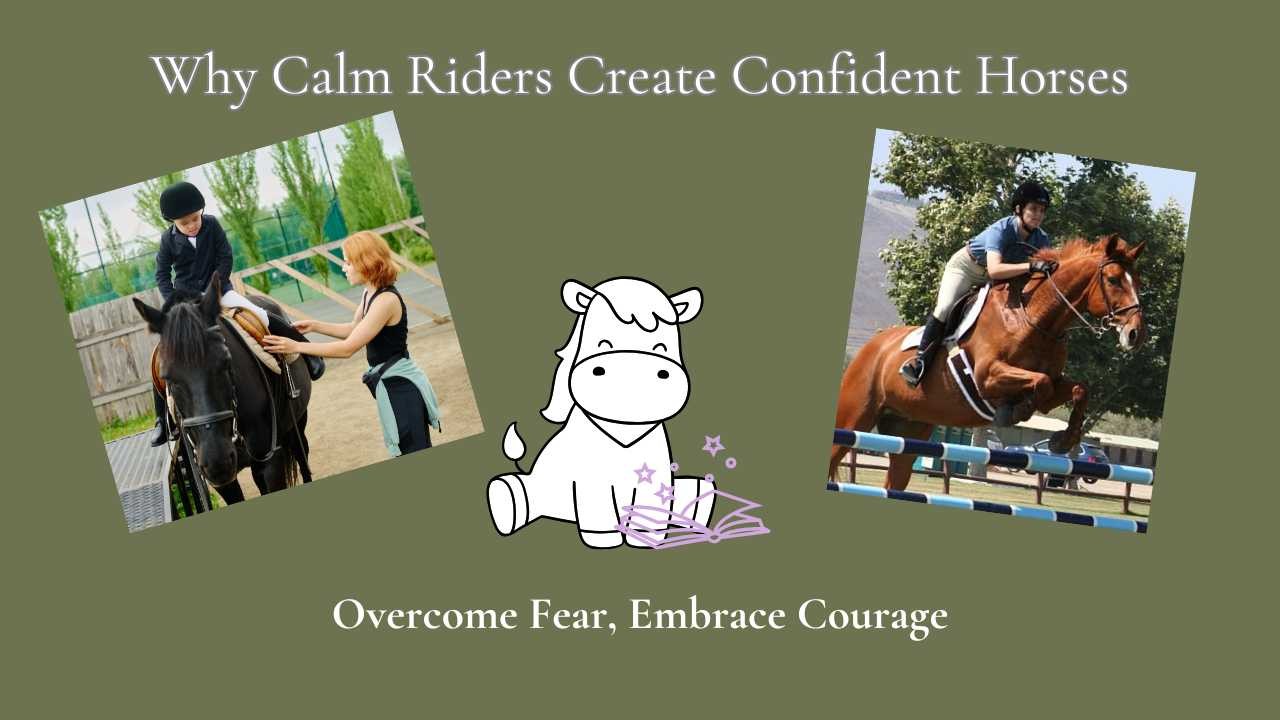
I used to think calm horses created calm riders—until I had a “been there, done that” jumper that I made anxious. What?? Yes, it was me, not him.
He was such a good boy, even with my extreme tension. But over time, he started reacting—triggered by my fears. Especially at the in-gate, waiting to go in for our jumper rounds.
That’s where my nerves were at their peak.
As I worked on my confidence, I could feel him shifting back to confidence too. It didn’t happen overnight. It took time for him to trust me again. But once he did, our shared confidence led to more enjoyable rides—even in competition.
A few things I realized:
- You can’t fake it ‘til you make it with horses. They know. You actually have to find real ways to feel confident. My favorite strategy was focusing on things I was confident in—even if they weren’t directly related to the fear. For example, I felt confident hacking, so I focused on walking to the warm-up ring and moving him laterally. I didn’t think about the course or the jumping at all. Focusing on what I could do helped me stay grounded, and once I was in the ring, I was fine.
- The little things matter. As soon as an anxious thought popped into my head, I’d replace it with something else—before it spiraled into a whole chain of anxiety. I practiced this even when I wasn’t riding, so it became second nature in the saddle. The key was catching that very first thought.
- Build a foundation of courage. The “courage pennies” concept helped me so much. Every time I did something that showed confidence or courage, I added it to my mental bank. Over time, those pennies built a solid foundation.(Want to learn more? Grab The Ultimate Guide to Courage Pennies—get your eBook here!)
The truth is: a rider’s confidence has more impact on a horse’s confidence than we realize. Building our own confidence is a skill—and it’s one that can transform our rides, our connection, and our joy in the saddle.
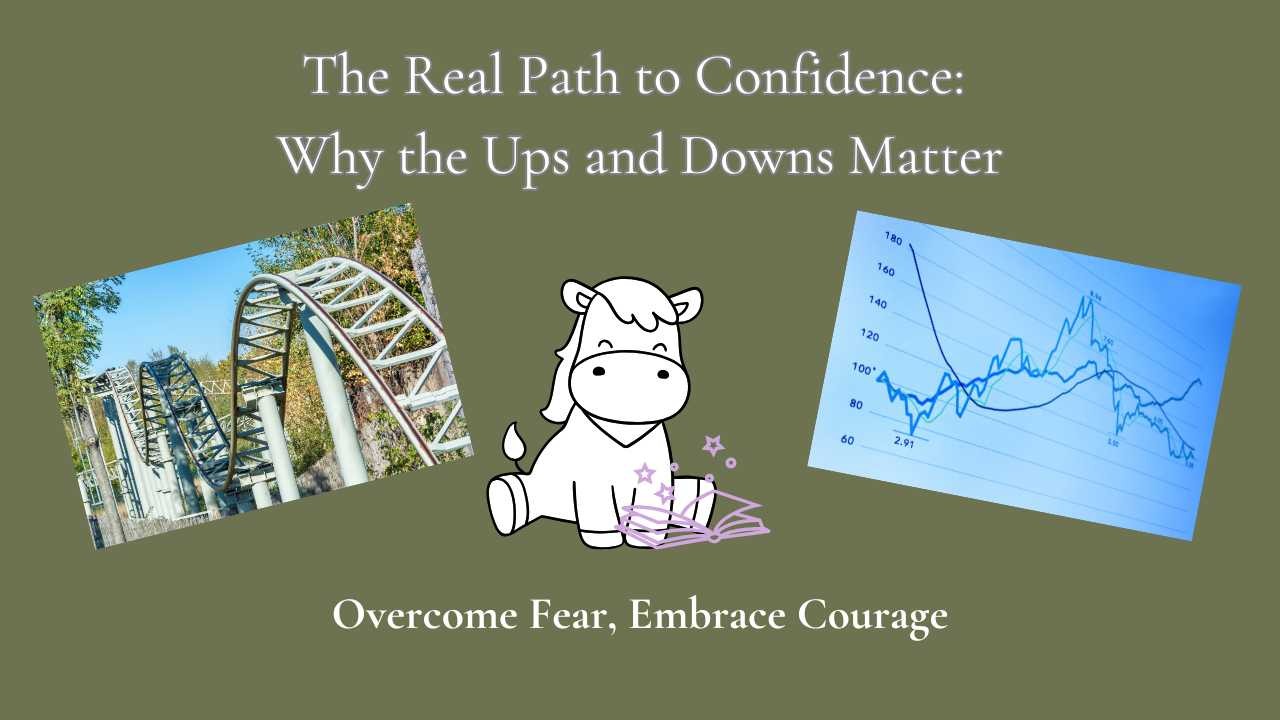
I was curled up in a fetal position, once again laying on the grass instead of on my horses back while he raced around like an escaped convict. I can remember the sun on me feeling so good and the smell of the grass was heavenly. Then the ring crew told me I had to get up and that I couldn't just lay there like a rag doll. The worst part? I had fallen off in front of Bill Gates. The best part, I had a chance to learn from my mistakes.
I had gone into the ring, so scared that I was like a stiff board trying to guide my poor horse jumping his heart out for me. This was one of those down moments that really shaped the depths of anxiety, my first time competing on the Grand Prix field at 1.2M, and it also gave me a peak at what the joy could be as I moved into confidence at that level. I remembered that same anxiety when I had my first competition at .90M. I was terrified. And yet, now, that seemed like a piece of cake with chocolate on top. The anxiety at the lower levels had fallen away and the joy filled me up.
It is important to look at the downs and not just hide them under the rug. Really see what you can learn from them and grow into. Confidence is a muscle that needs to be worked, stretched, reshaped as the anxiety falls away and the confidence builds. The ups and downs matter. They keep us going on our journey to enjoying life instead of sitting on the couch letting anxiety rule our world.
If you’re stuck in one of those “fetal position in the grass” moments—or just feeling like confidence is miles away—I want you to know: you’re not alone, and you don’t have to figure it out by yourself.
I help riders like you turn those tough moments into steppingstones. Together, we’ll create a personalized Calm-Ride Strategy that helps you navigate the lows, celebrate the highs, and build lasting confidence in the saddle.
Ready to see what your next peak could look like? Let’s map it out—grab your free Calm-Ride Strategy Call today.
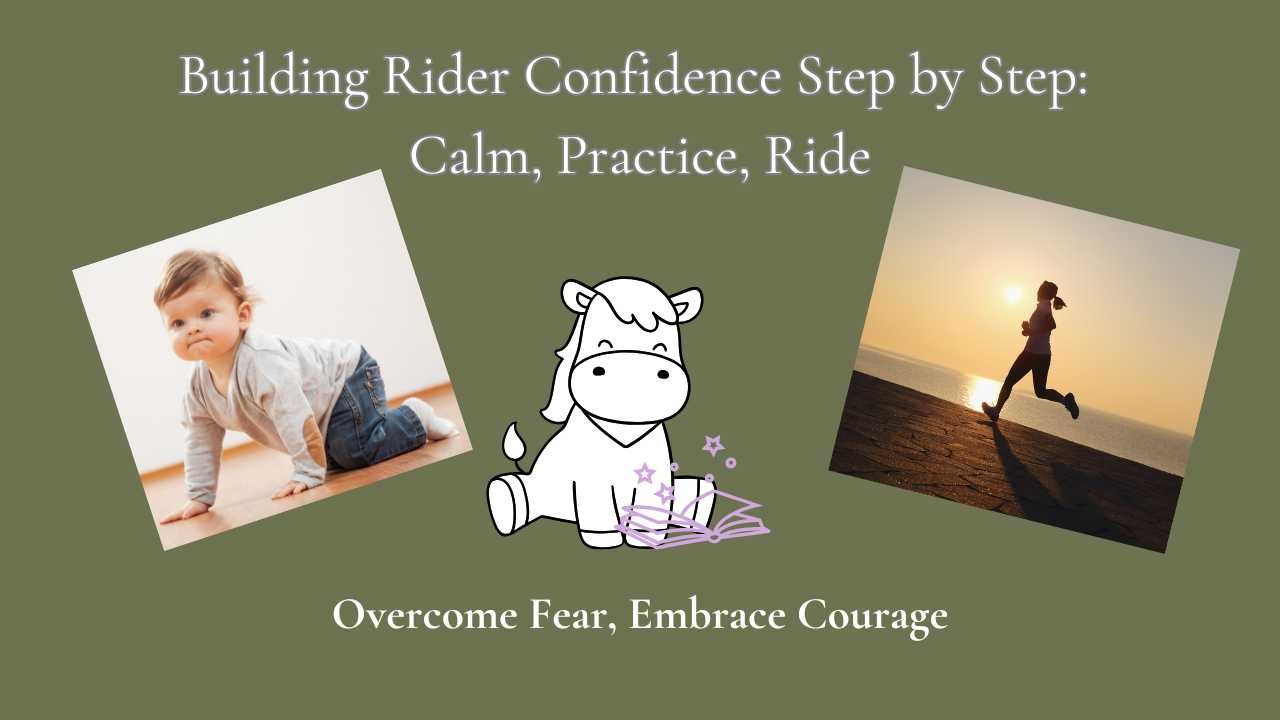
When we think about confidence, it’s tempting to believe some riders are just “born with it.” But that’s as unrealistic as expecting a baby to hop up and run before they’ve learned to crawl.
Confidence in the saddle is no different—it’s a skill, a muscle, something we build step by step.
Think about how we learn to move as kids:
- Crawl first. Slow, shaky, uncertain. This is where you start calming your mind, practicing grounding techniques, and finding steady footing before you even get on your horse.
- Then walk. You begin to add in little stressors—maybe a short ride, a new exercise, or a challenge that’s just outside your comfort zone—while practicing those calm-mind skills. You’re not racing, just getting stronger, building the confidence muscle.
- Finally, run. With practice, your mind and body work together. This is where confidence starts to feel natural again. You can lean into the joy of riding because you’ve done the work to build a foundation.
The truth is, fear doesn’t disappear overnight. But when you approach it in small, intentional steps, you set yourself up for real, lasting confidence. Just like learning to walk, you’ll stumble, wobble, and maybe fall—but every try strengthens your balance.
So instead of asking yourself, “Why don’t I just feel confident already?” try asking, “What step am I on today?” Because each step matters—and each step brings you closer to the ride you’ve been dreaming of.
👉 Want a tool to help? Grab my Confidence Blueprint—9 proven strategies to keep you moving from crawl to canter with courage. It is a full workshop in an ebook at a great price of $17 and you don't even have to travel! Get the Confidence Blueprint HERE!

“Am I going to die?”
That’s the question I asked the paramedic at least a hundred times on the hour-long drive to the hospital. A 17.3-hand horse had flipped onto me—no helmet, the saddle horn in my gut, pinned against a tree. I felt crushed from head to toe; certain I wouldn’t make it.
Physically, I was lucky. My body healed quickly.
Emotionally? Not so lucky. That accident hijacked my confidence.
Emotionally? Not so lucky. That accident hijacked my confidence.
A few seconds was all it took to bury my courage so deep it felt like I’d never find it again. What should have been months of healing turned into 20 years of battling fear, avoiding rides, and trying to figure out what went wrong.
Here’s the truth: your confidence can be stolen in a moment. But it doesn’t have to stay gone.
The good news: you can take it back.
The bad news: it takes work.
The better news: there’s a faster way forward than the decades it took me.
The bad news: it takes work.
The better news: there’s a faster way forward than the decades it took me.
After 20 years of trial and error, I discovered the three areas every rider must work on to reclaim confidence:
1. The conscious mind.
This is the “loud voice” in your head—the part that keeps replaying fear and feeding doubt. Left unchecked, it buries confidence in the shadows. The good news? There are tools to flip that script. My favorite is Courage Pennies—a simple practice of noticing where you already show confidence in daily life and letting those wins add up. (If you don’t have my Ultimate Guide to Courage Pennies eBook yet, grab it here!)
This is the “loud voice” in your head—the part that keeps replaying fear and feeding doubt. Left unchecked, it buries confidence in the shadows. The good news? There are tools to flip that script. My favorite is Courage Pennies—a simple practice of noticing where you already show confidence in daily life and letting those wins add up. (If you don’t have my Ultimate Guide to Courage Pennies eBook yet, grab it here!)
2. The subconscious mind.
Your subconscious has one mission: keep you safe. But it often confuses “safe” with “stuck.” Old beliefs and fears can dig in hard. I used to try and slowly reprogram this by working only at the conscious level—it worked, but it was painfully slow. That’s why now I pair conscious tools with deeper methods like NLP and hypnotherapy to help riders shift their subconscious faster.
Your subconscious has one mission: keep you safe. But it often confuses “safe” with “stuck.” Old beliefs and fears can dig in hard. I used to try and slowly reprogram this by working only at the conscious level—it worked, but it was painfully slow. That’s why now I pair conscious tools with deeper methods like NLP and hypnotherapy to help riders shift their subconscious faster.
3. The body.
When I wasn’t riding much, my body wasn’t in riding shape. And every ounce of stiffness, weakness, or imbalance just amplified my fear. The great news is that physical strength and health are the easiest to change—when you make them a priority, your body supports your confidence instead of undermining it. (I’m 61 and honestly feel better now than I did at 20!)
Confidence can be hijacked in a heartbeat, but it doesn’t have to stay missing. You can reclaim it—by training your conscious mind, rewiring your subconscious, and caring for your body so it supports your courage.
So let me ask you:
👉 What’s one step you can take this week to start freeing your confidence again?
👉 What’s one step you can take this week to start freeing your confidence again?
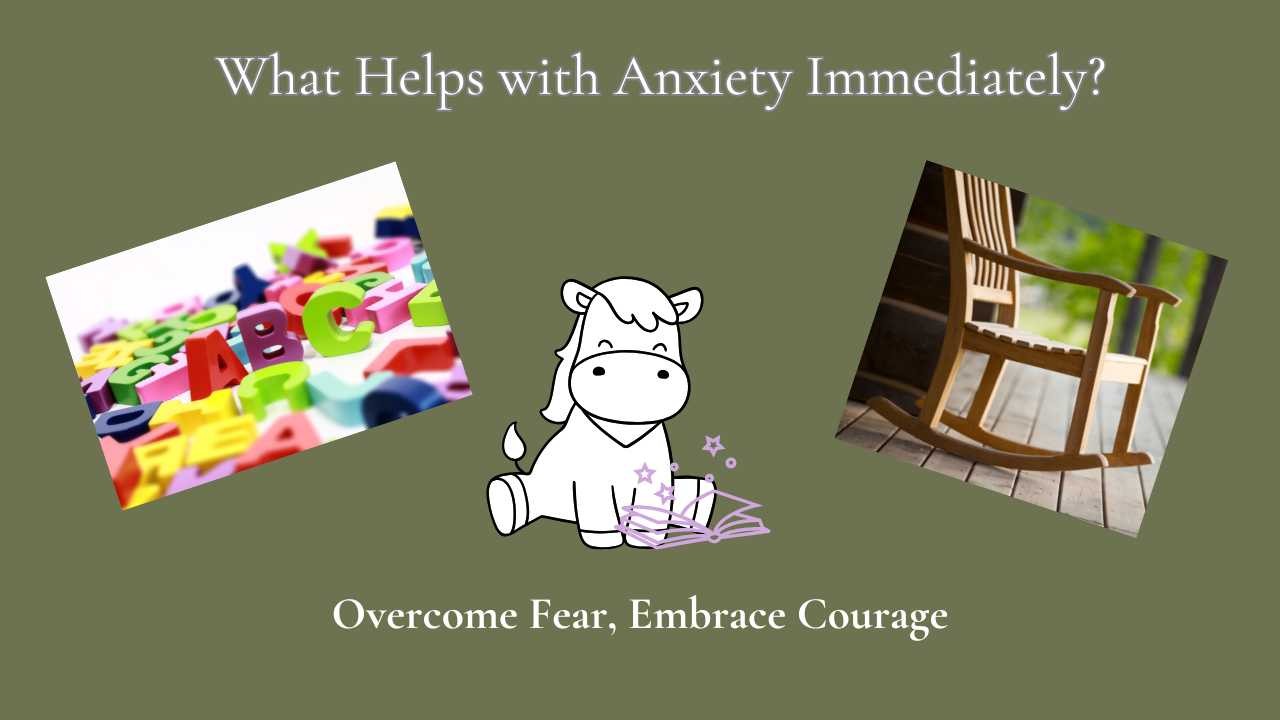
When anxiety hits, it feels like your body is hijacked. Your stomach flips, your chest tightens, your thoughts start racing — and all you want is relief right now. If you’re a rider, those feelings can show up at the barn, on the mounting block, or even just thinking about getting on your horse.
So, what actually helps with anxiety immediately?
The good news is, there are simple tools you can use anywhere, anytime to calm your body and mind. Here are three of my favorites:
1. Name Five Things....
This helps you STOP, look around, breath, and really see what is around you, no matter the situation. It’s a quick way to retrain your brain and body. As you look around at things to name, your nervous system begins to respond to you instead of running wild. Within minutes, you feel more in control and grounded.
This helps you STOP, look around, breath, and really see what is around you, no matter the situation. It’s a quick way to retrain your brain and body. As you look around at things to name, your nervous system begins to respond to you instead of running wild. Within minutes, you feel more in control and grounded.
2. Alphabet Game
Start at A and think of something that starts with A, Apple. Then move to B, Banana. Etc. What this does is it distracts your brain from triggering the anxiety and it acts as an interrupt. When you are feeling calm again, then go back to what you were doing that caused the anxiety. If it happens again, pick up where you left off in the alphabet and then you can just repeat if you need a little more. You can also find things you see that start with each letter.
3. Rock It Out (Your Body Remembers Safety)
Think about how babies are soothed — they’re rocked. That same rhythm works for you, too. Whether you gently sway side to side, shift your weight in your chair, or even let your horse’s walk carry you, rocking helps calm your nervous system. It’s like pressing “reset” on your body’s stress response. Within moments, you’ll feel more grounded and supported, ready to carry on with confidence.
Think about how babies are soothed — they’re rocked. That same rhythm works for you, too. Whether you gently sway side to side, shift your weight in your chair, or even let your horse’s walk carry you, rocking helps calm your nervous system. It’s like pressing “reset” on your body’s stress response. Within moments, you’ll feel more grounded and supported, ready to carry on with confidence.
Anxiety doesn’t vanish forever in one moment. But these tools can help you shift your state immediately so that you don’t spiral into full panic mode. And the more often you practice them, the faster your confidence grows — both in and out of the saddle.
If you’ve been struggling with riding anxiety, know this: you’re not broken, and you don’t have to just “push through.” With the right tools, you can calm your nerves in minutes and start enjoying your horse again.
Want more step-by-step support? That’s exactly what I cover in my Confidence Blueprint. This is a complete workshop in an ebook that you can get here! For a limited time, it is only $17 and will take you through a full Confidence building workshop.
